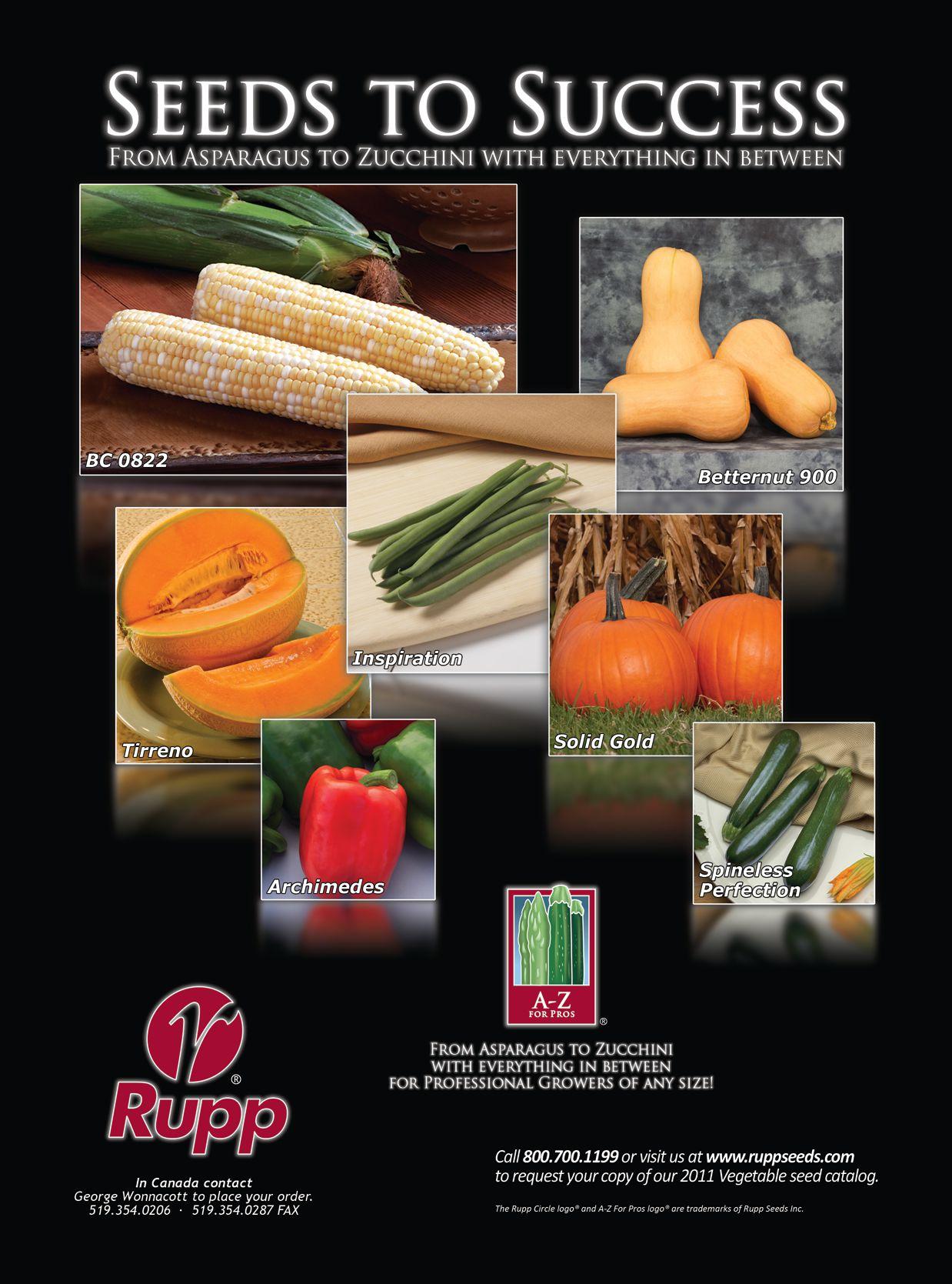




To achieve high-quality, high-yielding crops, you need insect control that can make a clean sweep of your enemies, without harming your friends.
DuPont™ Altacor® insecticide gives you the best of both worlds: excellent control of damaging pests plus minimal effect on bees and beneficials. Altacor® is powered by Rynaxypyr®, a breakthrough mode of action that delivers long-lasting protection against the orchard and vineyard pests that matter most: oblique-banded leafroller, codling moth, grape berry moth, climbing cutworm, oriental fruit moth, and more.
This year, help protect your crops and your beneficials at the same time with Altacor®


January 2011 Volume 67, No. 1
Editor Margaret Land mland@annexweb.com
519-429-5190 • 888-599-2228 ext. 269
Advertising Manager
Sharon Kauk skauk@annexweb.com
519-429-5189 • 888-599-2228 ext. 242
Sales Assistant
Mary Burnie mburnie@annexweb.com
519-429-5175 • 888-599-2228 ext. 234
Production Artist
Brooke Shaw
Group Publisher
Diane Kleer dkleer@annexweb.com
President Mike Fredericks mfredericks@annexweb.com
PuBLicatioN MaiL agreeMeNt #40065710 returN uNDeLiVeraBLe caNaDiaN aDDreSSeS to circuLatioN DePt., P.o. Box 530, SiMcoe, oN N3Y 4N5 e-mail: lmorrison@annexweb.com
Fruit & Vegetable Magazine is published seven times a year (January, February, March, Mid-april, May/June, September/october, November/ December) by annex Publishing & Printing inc., P.o. Box 530, 105 Donly Dr. S., Simcoe, oN N3Y 4N5
Printed in Canada ISSN 1488-7959
Circulation e-mail: lmorrison@annexweb.com tel: 1-866-790-6070 ext. 206 Fax: 1-877-624-1940
Mail: P.o. Box 530, Simcoe, oN N3Y 4N5
Subscription Rates
canada – 1 Year $ 21.00 (includes gSt – #867172652rt0001) $22.60 (includes QSt/HSt)
u.S.a. – 1 Year $35.00 uS
Foreign – 1 Year $ 55.00 uS
Occasionally, Fruit & Vegetable Magazine will mail information on behalf of industry-related groups whose products and services we believe may be of interest to you. If you prefer not to receive this information, please contact our circulation department in any of the four ways listed above.
No part of the editorial content of this publication may be reprinted without the publisher’s written permission. ©2011 Annex Publishing & Printing Inc. All rights reserved. Opinions expressed in this magazine are not necessarily those of the editor or the publisher. No liability is assumed for errors or omissions. All advertising is subject to the publisher’s approval. Such approval does not imply any endorsement of the products or services advertised. Publisher reserves the right to refuse advertising that does not meet the standards of the publication.


When one thinks of spherical objects in the wintertime, snowballs typically come to mind.
But the Ontario Apple Growers (OAG) are hoping to fight against that conditioned response with the first ever Winter Apple Ball, scheduled for Feb. 21 at the Westin Harbour Castle in Toronto, Ont.
The event, set for Family Day, will feature arts and crafts, dancing, games and inflatables for the little kids, a sports cage, trivia competitions and – one of the key attractions – a Guinness World Record attempt for the most people bobbing for apples.
The celebration is being held to help mark the 200th anniversary of the discovery of the McIntosh apple. Believed to be a descendant of the Fameuse or Snow apple, the McIntosh was discovered by John McIntosh on his farm near Dundela, Ont., located just north of the St. Lawrence River. According to folklore, while clearing trees from his land, McIntosh came upon 20 small apple trees. He transplanted them to a different part of his property and was surprised when one bore fruit that was much better than the others. With the prompting of friends, he decided to name the apple the McIntosh Red. McIntosh reproduced the tree and taught his son Allen
how to graft and bud. Allen travelled throughout Ontario and distributed trees among the many locals he met along the way. He also taught them grafting and budding, and eventually, he started his own tree nursery.
The original McIntosh tree was damaged by a house fire in 1894 but still continued to produce fruit for more than 90 years. It died in 1906 and a plaque marks the place where it once stood.

It’s said that every McIntosh tree in the world can be traced back to that original tree on John McIntosh’s farm. And many of North America’s most famous apple varieties – including Cortland, Spartan, Empire, Macoun, Melba, Lobo and possibly even Paula Red – have the McIntosh as one of their parents.
Rumour has it that Steve Jobs, cofounder of Apple and the Mac computer, named the company after the McIntosh apple after spending a summer working on a friend’s apple orchard.
Not bad for a little apple from Eastern Ontario.
Apple enthusiasts from across the province are invited to take part in the OAG’s
CleanFARMS has been awarded funding to undertake a firstof-its-kind study into the types and quantities of non-organic waste found on farms across Ontario – and how best to safely and responsibly dispose of that waste.
The Ontario Ministry of Agriculture, Food and Rural Affairs has committed $140,000 to this project for two years through the Canada-Ontario Agreement Respecting the Great Lakes Basin Ecosystem. The Canadian Animal Health Institute and industry have pledged additional cash and in-kind contributions.
Plastic is one of the largest waste products found on farms but there are countless other waste products generated through farm operations, including un-used or expired animal health products. As it stands today, there is no one single coordinated mechanism in place that allows farmers to easily and costeffectively recycle or dispose of all of their waste.
As an industry stewardship organization that already runs empty pesticide container recycling programs and obsolete pesticide collection initiatives, CleanFARMS is looking to develop mechanisms to manage all agricultural waste.
“We’ve had tremendous success with our empty pesticide
McIntosh celebration by attending the Winter Apple Ball. The group is partnering with Toronto’s Second Harvest, an organization that feeds people in need. In light of this, attendees are asked to bring their favourite type of Ontario apple to the event for donation to those in need.
For more information, visit the website www.onapples.com.
Of course, the Winter Apple Ball isn’t the only event growers have an opportunity to take part in. Winter is the time for fruit and vegetable organization annual meetings and conventions across the country. And Fruit and Vegetable Magazine hopes to see many of you during our travels. We will have representatives at the Scotia Horticultural Conference and Nova Scotia Fruit Growers Association Annual Convention, both being held in late January at Wolfville, N.S. We will also be attending the Ontario Processing Vegetable Industry Conference, Manitoba Potato Production Days, the Ontario Fruit & Vegetable Convention plus the B.C. Tree Fruit Horticultural Symposium, this last scheduled for early March.
Safe travelling! ❦
container recycling program and our obsolete pesticide collection program. We see an opportunity to build on our existing initiatives to develop programs to manage all on-farm waste,” says Barry Friesen, general manager of CleanFARMS.
With this funding CleanFARMS will undertake a comprehensive study to determine four key things:
• The quantity and types of agricultural waste found on farms across the province, including animal health products, agricultural packaging, and other agricultural plastics;
• Who is responsible (manufacturers or first importers) for bringing these products into Ontario;
• What kind of collections programs might work for these products and the associated costs; and
• What kind of stewardship opportunities exist for these materials, including a risk assessment for each one.
The results of this study will provide valuable insight into how end-of-life management of agricultural waste products can help protect the environment, including water quality in the province. ❦
Track your fruit production with Field Manager PRO
Order now and you could winan Arctic Cat ATV*

Your customers want products that are traceable With Field Manager PRO, you can track your inputs, costs and activities Increase the marketability of your fruit crop and get a complete picture of your production and field records Field Manager PRO includes desktop and mobile software


TBy James Careless
he Yukon Gold potato has become a favourite of Canadian consumers, and small wonder: Its golden flesh, rich flavour and excellent appearance hit all the right marks. However, what makes the Yukon Gold a Canadian scientific triumph is the fact it was developed by the University of Guelph’s potato breeding program.
The effort was spearheaded by potato breeder Dr. Gary Johnston, with support from Agriculture and Agri-food Canada (AAFC). One of his graduate students told Dr. Johnston about a Peruvian yellowfleshed potato that was considered to be a local delicacy.
“On his next trip back to Guelph, he brought me a few tubers,” Dr. Johnston wrote in a 1998 letter. “They were indeed quite ‘tasty’ when cooked.”
The only downside is that the Peruvian potatoes were rough and small in size. No problem: “Why not try to create a potato variety with normal size, shallow eyes, globular shape and yellow flesh,” Dr. Johnston thought. To do this, the University of Guelph team crossed W5289-4 (a 2x cross between Yema de huevo and 2x Katahdin Pervuian breeds) and “Norgleam potatoes from North Dakota which had excellent shape and size, very early and had attractive appearance,” he wrote. “This cross was made in 1966. To my surprise true seed was produced and G6666 [the first of what would be called the Yukon Gold potato] was born.”
It took many more trials and growing, but the resulting Yukon Gold potato was eventually licensed – in 1980.
The time it took to develop the Yukon Gold comes as no surprise to Eugenia Banks.
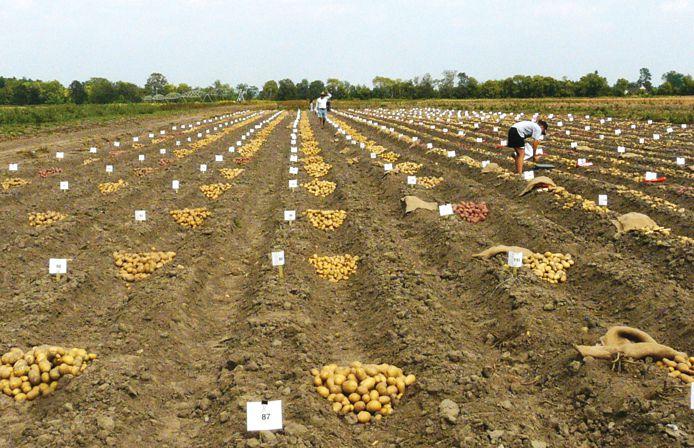
The OMAFRA potato program evaluates about 600 new clones from university breeding programs each season using seeds developed by the University of Wisconsin, Michigan State University, North Dakota State University, and the Tri-State Breeding Program (Idaho, Oregon and Washington states). Potato clones from European breeding programs, such as HZPC, Europlant and Solana, are also included in the annual evaluation.
“Breeding potatoes is a long process,” says Banks, a potato specialist with the Ontario Ministry of Agriculture, Food and Rural Affairs (OMAFRA). “It takes about 14 years to develop a potato variety with traits that growers and consumers wish.”
Good looks matter –but they’re not everything Thanks to modern genetic and cloning techniques, it is possible to create potatoes that are resistant to specific pests and bacteria, plus have the ability to better survive droughts and the other hazards that Mother Nature throws at them. But although breeds are being developed with these traits, “good looks” are driving the market these days.
“We are making tremendous progress in creating new strains of potatoes that are tougher than their predecessors,” says Dr. Walter De Jong, an associate professor and director of graduate studies in the field of plant breeding at Cornell University in Ithaca, N.Y. “But what are the top three things that the fresh produce market want most in new potato varieties? It’s simple: Appearance, appearance and appearance.”
In the world of potatoes, good looks means a tuber “with yellow flesh that is round to slightly oval,” says Keith Kuhl, president and CEO of the Southern Manitoba Potato Company in Winkler, Man. “Whatever eyes there are should be very shallow, such that you can remove them cleanly with just a pass of the potato peeler.”
Given the public’s preference for yellow-fleshed potatoes, the phrase “beauty
is only skin deep” doesn’t apply here. But there are other qualities that define popular potatoes beyond appearance.
“A good ‘baker’ should have flesh that stays firm and doesn’t fall apart,” Kuhl says. “A good masher should stay moist for easy mashing without being mushy.”
From a potato farmer’s perspective, “the traits being sought for table potato varieties (white and yellow flesh) are consistent performance, early maturity, plus resistance to scab and to bruising,” says Banks.
And that’s not all: Besides the necessary good looks, great taste and reliable consistency, new breeds have to deliver high yields, have low nitrogen requirements and be easy to store for long time periods.
“They also require resistance to Verticillium [fungus], pink rot, leak, early and late blight, common mosaic,” says Banks. “For red-skinned varieties, the above traits apply but minimum skinning at harvest and a deep red skin colour that does not fade in storage are a must. For the table market, resistance to common scab is a priority these days because of the lack of reliable control methods for this soil borne bacterial disease.”
Then there’s the potato chip and French fry market. Potatoes grown for this sector must be low in sugar and high in starch. Otherwise, they will tend to turn brown when deep-fried, which doesn’t look as good to consumers as – you guessed it –golden brown.
“Colour turn is also an issue when potatoes are stored in cold,” Kuhl notes. “Again, potatoes with low sugar tend to retain their

Clone 30 grows consistently in both wet, cool seasons and hot ones. It is also “tasty, resistant to scab, and has smooth skin and white flesh,” says potato specialist Eugenia Banks.
original colour at colder temperatures.”
That’s not all: Chipping potatoes must be at least medium-sized with average to above average yields, resist pitted scab, pink rot, leak and late blight, and tolerate being stored from harvest right to June of the following year – all without compromising their flavour.
With all of these demands, it is not surprising that developing new potato varieties takes a lot of time. The process traditionally begins with researchers crossbreeding different breeds of potatoes, trying to come up with hybrids (like the Yukon Gold) that capture the best qualities of their parents.
However, it is now possible to identify genetic markers (specific known genes or DNA sequences) with specific parent breeds to improve the odds of successful hybridization. Genetic transplantation also offers opportunities for making better breeds of potato.
“The transgenic method – where you take desirable genes from other species and insert them into the potato plant – is not used these days due to negative public perceptions,” says Dr. De Jong. “There may be less hostility to inserting DNA from other potato species, so this may be one way that we can speed up the hybridization process.”
Whatever method is used, the bulk of the development process lies in planting the new breeds and in seeing what grows. Cloned plantings are often used, to ensure consistency among samples. Then they are bred, and bred again for a number of

generations. The goal is to get to know each new breed’s characteristics and potential, in a range of growing conditions.
“The OMAFRA potato program evaluates about 600 new clones from university breeding programs each season,” says Banks.
These programs use seeds developed by the University of Wisconsin, Michigan State University, North Dakota State University, and the Tri-State Breeding Program (Idaho, Oregon and Washington states). Potato clones from European breeding programs, such as HZPC, Europlant and Solana, are included in OMAFRA’s annual evaluation.
“I usually walk plots after harvest, searching for clones that catch my attention,” Banks says. “In 2009, of 275 clones
LEFT: North Dakota State University is very close to releasing a new redskinned potato with high yield and excellent flavour.
RIGHT: It is now possible in potato breeding to identify genetic markers (specific known genes or DNA sequences) with specific parent breeds to improve the odds of successful hybridization.
tested, only one caught my attention. I asked some growers to walk the same plot and let me know which, in their opinion, was the best. They all stopped at Clone 30, the same one I selected.”
Besides growing consistently during both the wet, cool year of 2009 and the hot summer of 2010, Clone 30 has other important attributes, she says. “Clone 30 is tasty, resistant to scab, and has smooth skin and white flesh.”
Besides Clone 30, “the North Dakota State University is very close to releasing a new red-skinned potato with high yield and excellent flavour,” Banks says. “For processing varieties, I have evaluated 180 clones from the University of Wisconsin. After five years, there are four clones that look promising.”
Estival lettuce named 2010 Seed of the Year
A lettuce variety with outstanding performance, sustainability, marketability and industry impact topped entries in the sixth annual Seed of the Year competition (east division).
Estival Lettuce, developed by Sylvie Jenni of Agriculture and Agri-Food Canada, was named Seed of the Year (east division) at the Royal Agricultural Winter Fair in Toronto.
Estival Lettuce is a new cultivar with three years on the market. It took 10 years of research to create the variety, which currently represents 18 per cent of the total crisp head lettuce sold in Canada. It has a high tolerance to bolting and rib discoloration. Estival has a greater capacity over other popular varieties to produce a high head weight on a short stem. It is a high-quality lettuce variety adapted to extreme weather conditions and was developed specifically for both the fresh and processing markets.
Coop Uniforce of Quebec has supply of the lettuce variety available for order.
Three other finalists for the east division of Seed of the Year were also recognized. They are Yukon Gold, a potato variety nominated by University of Guelph professor Alan Sullivan and technician Vanessa Currie; AC Gehl, a hulless oat variety developed by Bill Collins and Vern Burrows of the Eastern Cereal and Oilseed Research Centre, AAFC, in Ottawa; and AC Rigodon developed by Jean-Pierre Dubuc and Andre Comeau of the Soils and Crops Development Research Centre, AAFC, in Quebec City.
Estival was also nominated for the eastern Canada Seed of
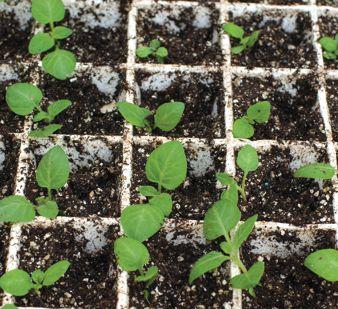
The years spent in developing the Yukon Gold and newer promising potato breeds is time well spent. Table potatoes that are tasty and eye catching are better sellers, especially in an age when consumers’ cooking skills end at putting tubers in the microwave oven. Meanwhile, chipping potatoes that can go the distance in storage, low temperatures and high yields help keep manufacturing costs down and producer profits up.
For potato farmers, all this progress can be a bit bewildering. After all, there used to be only a handful of potato varieties being grown; now there are thousands to choose from. And they are better looking than ever. ❦
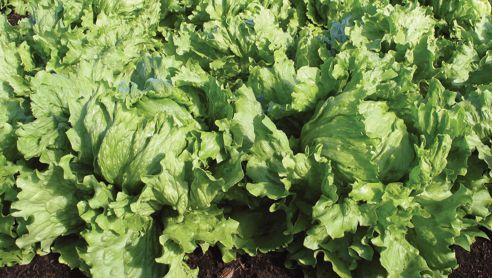
the Year award in 2008 and 2009. The lettuce variety was beaten out by the Chapais barley in 2009 and the soybean variety OAC Kent in 2008.
The Seed of the Year competition encourages public breeders to highlight their research accomplishments in developing a new field crop, forage, fruit, vegetable or herb variety. Any publicly developed Canadian variety is eligible to compete.
The competition was designed by the University of Guelph and SeCan, with support from the Ontario Ministry of Agriculture, Food, and Rural Affairs, and Agriculture and Agri-Food Canada. Additional sponsorship was provided by Ontario Bean Producers, Ontario Soybean Growers, Canadian Seed Growers, Ontario Fruit and Vegetable Growers’ Association and Ontario Asparagus Marketing Board.

With the same active ingredients as the other brands, the only difference you’ll see is the money you save.
MANA products target insects as quickly and efficiently as the name brands, only they do it at a fair price. Support fair pricing and ask your retailer for MANA insecticides.

Matures in 54 days; straight pods of a dark green colour. Slightly longer and thinner than all the other varieties; tolerant to common Mosaic Virus and Beet curly top Virus.
Courtesy of Norseco and Rupp Seeds

early ripening thornless variety with very high production potential. Very large berries can be harvested during a three- to five-week season. Performs best with a trellis. Zones 6-8. Courtesy of Nourse Farms

green Summer hybrid cabbage, bronco type, matures in 65 days. Bluish green wrapper leaves, small core and dense interior. excellent field holding.
Courtesy of Norseco
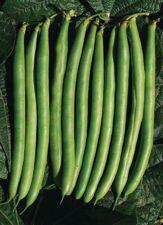
Matures in 53 days. Medium dark green, straight pods, upright plants. excellent disease package with strong tolerances to cBMV, BctV, Halo Blight and rust.
Courtesy of Stokes Seeds
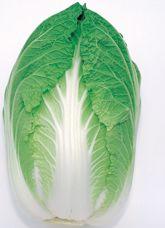
Hybrid, Nappa variety, strong plant, uniform harvest of two- to threepound heads. clubroot resistant. Dark green colour. good storage ability.
Courtesy of Siegers Seed
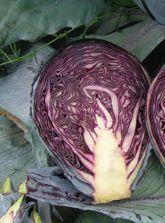
red Winter hybrid cabbage, matures in 110 days. Slightly elongated shape, small core, excellent yield. tolerant to tip burn.
Courtesy of Norseco

Velour’s bright purple pods are beautiful, straight, and slender. Pods turn green upon cooking and have a rich taste. Medium-sized, upright plants yield well.
Courtesy of Johnny’s Selected Seeds

a fresh market cabbage; produces large size heads for coleslaw and processing. Head weight is three to eight pounds. Matures in 85 days from transplant.
Courtesy of Seedway

this broad bean variety is earlier maturing and better yielding than Broad Windsor with better quality than aquadulce. Large pods, with an average of 4-5 seeds per pod.
Courtesy of Siegers Seed

green Winter hybrid cabbage, matures in 92 days, early for longterm storage, holds its freshness. tolerant to Fusarium yellows, thrips and tip burn.
Courtesy of Norseco

red Summer hybrid cabbage; Primero type; matures in 62 days. Well-covered heads, very uniform; Has Fusarium yellows resistance; tolerant to pepper spot and tip burn.
Courtesy of Norseco

identified in our trial program as a superior, very early maturing, fresh market cabbage with excellent uniformity, fresh green colour, is slow to burst and has an excellent disease package. Foc(ir), xcc(ir).
Courtesy of Siegers Seed

early chatenay type carrot with smooth tapered roots; deep orange colour; works primarily as a dicer; productive with long storage potential. Matures in 100 days. Courtesy of Seedway

Sweet corn yellow Sh2 hybrid; matures in 75 days; smooth, rounded kernels; new “Super Seedware” gene that offers increased vigour in cold soils.
Courtesy of Norseco

classic cello hybrid carrot with superior uniformity, great colour, and smooth finish. the taste is outstanding with a very crisp texture. Bolting(t), cracking(t).

attribute® insect protected tripleSweet® with excellent eating quality. 77 day bicolour with great husk cover and attractive flags. Bm(ir), et(ir), Psrp1g(ir), Pst(Hr). Courtesy of Rupp and Siegers Seed

a tripleSweet Plus™ variety tripleSweet with tender kernels, great flavor and texture. Matures in 81 days. Courtesy of Seedway

Deep blue kernels with occasional lighter blue kernels for contrast. red and white husks! also used as a colourful novelty popcorn. Courtesy of Siegers Seed

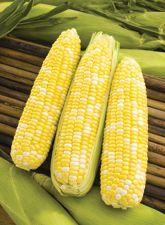
Super uniform cMShybrid green cauliflower. it is the first true green cauliflower that can be grown through the summer without excessive hairiness and bracting. Heavy heads are uniform in size and shape.
Courtesy of Siegers Seed

Matures in 75 days. outstanding multi-tolerances to common rust with the new rust rp/1g gene. Bicoloured hybrid, cylindrical ears have dark green husks, blunt well-filled tips, tender kernels. Picks and packs easy.
Courtesy of Stokes Seeds

Sweet corn bicolour Sh2 hybrid; matures in 74 days; vigorous, healthy plant. rust tolerant. Courtesy of Norseco
Sweet corn bicolour Sh2 hybrid; matures in 76 days; high yield potential; an obsession type with rust tolerance. Courtesy of Norseco
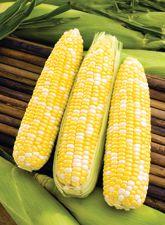
Matures in 81 days. High quality bicolour augmented sh2, excellent shipping ability. attractive dark green husk, good flags, superior heating quality.
Courtesy of Rupp and Stokes Seeds

Strong vigour and superb flavour for early (71-day) season production, which will bring your customers back for more. Pst(ir).
Courtesy of Siegers Seed

Hybrid pickling cucumber; matures in 55 days; very dark fruit; short vine variety; gynoecious. Courtesy of Norseco

Slicing cucumber with complete package of earliness, uniformity, dark green colour, strength and vigour; plant produces uniform, straight fruit. Vines also work well if trellised. impressive disease package. Courtesy of Seedway

Hybrid slicing cucumber; matures in 54 days; straight, dark green fruit; excellent quality. Multivirus variety. Courtesy of Norseco

Hybrid greenhouse cucumber; can be grown in any season; improved PM tolerance. Courtesy of Norseco

this is the first whiteskinned pickling cucumber with powdery mildew resistance. the cukes are three to five inches with good flavour, disease resistance. Courtesy of Johnny’s Selected Seeds

Burgundy and cream stripes, firm oval to tear-shaped fruit. Seven to nine inches long. Courtesy of Seedway

corinto starts early and continues vigorous production of dark green, uniform slicing cucumbers. it has a thinner skin that contributes to the excellent flavour. Courtesy of Johnny’s Selected Seeds

Hybrid pickling cucumber; matures in 52 days; dark fruit, high yield; gynoecious; an alternative to Vlaspik. Courtesy of Norseco

creates an eye-catching display. its fruit have a round and ribbed shape and are tasty and tender. Barbarella has a purple calyx. courtesy of Johnny’s Selected Seeds

Hybrid Lebanese cucumber; matures in 55 days; compact vine, very smooth skin. Courtesy of Norseco

Hybrid slicing cucumber; matures in 54 days; dark, smooth, uniform fruit. tolerant to powdery mildew. Courtesy of Norseco

early maturing, hybrid, very uniform size and shape, slow bolting. Bulbs are flat-round and very smooth. replaces rapid Star. Courtesy of Siegers Seed

earlier maturing midseason hybrid that has displayed excellent commercial production in all leek-growing regions. Superior uniformity, colour, and yield.
Courtesy of Siegers Seed

a nice fit for the early slot; good size, weighs five to eight pounds. Matures in 76 days from transplant.
Courtesy of Seedway

oval shaped melon with green rind at immature stage, turning to white, and covered with yellow pattern at full maturity. Prolific yielder. Flesh is thick, white, very sweet quality.
Courtesy of Siegers Seed

Hybrid yellow onion; matures in 103 days; good root system; for long-term storage.
Courtesy of Norseco
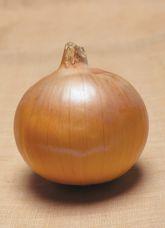
Hybrid yellow onion; matures in 94 days; dark green round globes; combines earliness and long-term storage; tolerant to Fusarium and Botrytis.
Courtesy of Norseco
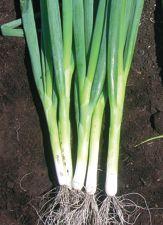
Hybrid bunching onion; matures in 65 days; very erect bluish foliage; high quality; strong against bulbing.
Courtesy of Norseco
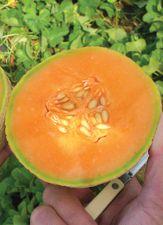
Hybrid melon; matures in 68 days; excellent taste, shipping qualities; very complete disease package.
Courtesy of Norseco

Melon from enza Zaden; produces six- to seven-pound fruit with beautiful firm flesh, excellent holding ability; tremendous plant health to boost yields.
Courtesy of Rupp Seeds
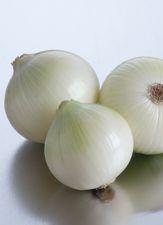
Mt. Whitney, which has very uniform, large, white-skinned onions with mild flavour and thick rings, is a widely adapted, day-neutral variety. Not for long storage. Pink root tolerant. Courtesy of Johnny’s Selected Seeds

Nabai Queen white F1 hybrid, matures in 45 to 50 days, hybrid, baby type. Dark green leaves with fat, pure white petioles. Similar to New Nabai, but slower bolting.
Courtesy of AgroHaitai

this new variety of bunching onion is excellent for summer/ high heat harvest. Single stalk, strong tops, and a plant type that will not lodge.
Courtesy of Siegers Seed

a new, 76-day variety from Seminis; large blocky, firm fruit; phytophthora resistant. Courtesy of Rupp Seeds

a hot banana-type hybrid, matures 60 days after transplant; vigorous growing; high yield; shiny yellow fruit. Courtesy of AgroHaitai

Long, medium hot hybrid, early maturity, productive. green twisted fruit becomes red when mature.
Courtesy of AgroHaitai

extremely productive, excellent quality hybrid sweet banana with superior colour, size, uniformity, wall thickness. Field tolerance to phytophthora and BLS2 add to this variety’s strengths.
Courtesy of Siegers Seed

Hybrid bell pepper; matures in 67 days; dark green to red fruit; concentrated harvest of large, smooth fruit; resistant to tMV, tobacco etch Virus and tobamo Virus.
Courtesy of Norseco

Matures in 75 days; Syngenta pepper that features an excellent set that produces a high percentage of large fruit that are firm, smooth. Courtesy of Rupp Seeds
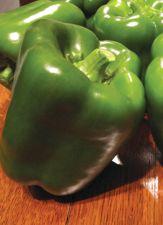
Sweet hybrid, matures in 75 days. extra large, four-lobed continuous setting fruit provide high-quality pack outs for staked or bush culture.
Courtesy of Stokes Seeds

Seven Valley F1, largefruit type, early maturity, high yield. green fruit, thick flesh, mild hot. Courtesy of AgroHaitai

Matures 60 days after transplant. Vigorous and high yield, heat and cold tolerant. Yellowish green fruit.
Courtesy of AgroHaitai

Matures in 72 days. Features include uniform size and dark green colour. Fruit is smooth, extra-large, protected with good canopy. Slow to turn but makes a dark, even red. Courtesy of Seedway

Hybrid greenhouse pepper; nice red colour; good production, even in hot summer conditions; for spring, summer and fall seasons.
Courtesy of Norseco

Matures in 100 days. Large dark orange globe shaped pumpkin. excellent handles, medium ribbing. tolerance: Powdery Mildew. Courtesy of Stokes Seeds

Hybrid with blocky round shape, moderate sutures, excellent colour with strong dark green embedded handles. ideal jack-o’-lantern style and size.
Courtesy of Siegers Seed

eye-catching, stackable, large flat pumpkin with a white ribbed rind and orange flesh. For ornamental use, and edible with a sweet, nutty flavour.
Courtesy of Siegers Seed

Polar Bear is an extralarge white pumpkin that retains its colour after maturity. its long vines produce fruit typically weighing 30 to 40 pounds. it is bred by Johnny’s.
Courtesy of Johnny’s Selected seeds

a new primocane variety from Poland. the plant is vigorous with an upright growing habit. Berries are large, very firm. the fruit does not darken as much as in other varieties. Zones 4-8.
Courtesy of Nourse Farms

Miniature pumpkin has huge yields, concentrated fruit set, superior uniformity, little one- to two-pound pumpkin suited for painting, centrepieces and tabletop decor.
Courtesy of Siegers Seed

rival PMr is a round, medium-sized jack-o’lantern with intermediate resistance to powdery mildew (ir-PMr). Medium length vines produce deep orange pumpkins weighing an average 15 to 20 pounds.
Courtesy of Johnny’s Selected Seeds
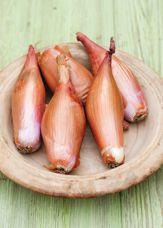
Productive shallot with dark pink, elongated bulbs and white flesh. Performs best on welldrained soil in sunny locations. Suitable for freezing.
Courtesy of Siegers Seed

Hybrid pumpkin; matures in 92 days; compact vine for high density sowing; produces seven to eight fruit per plant; between 0.3 and 0.45 kilograms per fruit.
Courtesy of Norseco and Seedway
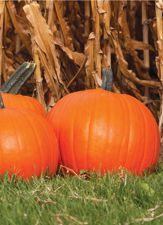
Hybrid pumpkin; matures in 100 days; a 25-pound pumpkin that offers excellent colour, handles, yields.
Courtesy of Rupp Seeds

Hybrid pumpkin; matures in 90 days; bush vine type with fine dark orange stripes on top of fruit; thick, sweet deep orange flesh with very few fibres; between 2 and 2.5 kilograms per fruit.
Courtesy of Norseco
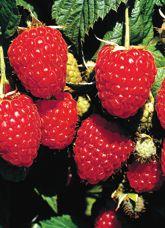
this is a new late season floricane raspberry. early trials show excellent productivity and flavour. Winter hardiness has been variable. Zones 5-7.
Courtesy of Nourse Farms
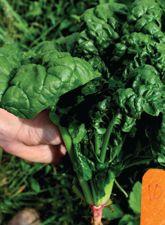
good for baby leaf, bunched, processing. Has dark green, thick, oval, supple leaves and a strong, heavy stem. Puts on size fast. good in cool to slightly warmer weather. resistant to Powdery Mildew. Courtesy of Seedway

Hybrid spinach; matures in 50 days; semi-savoy; round, dark green leaves; holds well even during hot summer days. Courtesy of Norseco

Hybrid spinach; matures in 50 days; savoyed leaves; very dark green, thick, nearly round leaves; very upright plant habit.
Courtesy of Norseco
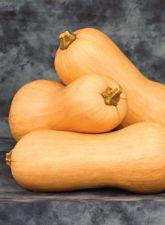
a new, 80-day hybrid squash from rupp Seed. the eight- to nine-inchlong fruit are excellent for boxing; grown on a Powdery Mildew tolerant, semi-bush plant.
Courtesy of Rupp Seed

Daroyal is vigorous with strong rooting capacity and excellent foliage. Berries have attractive conic shape, bright red colour, and a glossy appearance. Producing high yields. Zones 5-7.
Courtesy of Nourse Farms

a very late strawberry, record is an idea hybrid, with improved red colour, berry quality and overall performance. Very vigorous plant with no apparent foliage issues. Zones 5-7.
Courtesy of Nourse Farms

Donna has highly attractive, shiny, smooth, conic fruit, with a sweet, pleasant strawberry flavour. Fruit size is medium-large, with excellent red colour, and it holds its size well throughout the picking season. Zones 5-7.
Courtesy of Nourse Farms

Swiss chard with bright red petioles, dark green leaves. Courtesy of Norseco

this colourful blend of fun, saucer shaped squash can be harvested small and eaten like scallop squash. grow larger for a display of beautiful and decorative fall ornamentals.
Courtesy of Siegers Seed

galletta ripens early and produces very large, attractive, good-quality berries with a glossy finish. it holds fruit size well throughout the picking season. Zones 5-7.
Courtesy of Nourse Farms

early tomato that carries resistance to both Fusarium race 3 and tYLcV; produces large to extra large smooth, firm fruit; striking red colour. Strong plants are productive, has high yield potential.
Courtesy of Seedway

Hybrid Summer squash; matures in 68 days; vegetable spaghetti type; intermediate vine; earlier, more productive; one to two kilograms per fruit.
Courtesy of Norseco

this everbearing strawberry produces small to medium fruit. Berries have an attractive red colour. Planted in the spring, it will produce fruit during the summer into the fall. Zones 5-7.
Courtesy of Nourse Farms

Five Star grape has excellent, sweet flavour and firm, meaty texture with few seeds and little juice. it bears high yields of crack resistant grape tomatoes. it is indeterminate.
Courtesy of Johnny’s Selected Seeds

Hybrid tomato; yellow cherry type; matures in 65 days; no cracking; indeterminate; good tolerance to Bacterial Spot.
Courtesy of Norseco

Hybrid greenhouse tomato; fruit ripens all at the same time; very uniform cluster; holds well; globe shape.
Courtesy of Norseco

a roma tomato with late blight resistance, weighs four ounces; fruit holds up well to cracking and grey wall; deep red interior colour.
Courtesy of Seedway

Hybrid tomato; matures in 64 days; very vigorous, productive; can be grown in high tunnels, greenhouses; determinate.
Courtesy of Norseco

Hybrid seedless watermelon; matures in 76 days; tolerates high temperatures; slightly oval shape; crisp and sweet; eight- to nine-kilogram fruit.
Courtesy of Norseco

Fascination is a hybrid triploid with a rich deep green rind colour. it has a firm and deep red flesh. it’s the next-generation crimson seedless variety, sporting improved Fusarium tolerance. Courtesy of Siegers Seed

Hybrid italian-type tomato; matures in 70 days; large, smooth, firm fruit; very vigorous plant; excellent disease package.
Courtesy of Norseco

Hybrid tomato; campari type, red cocktail; matures in 65 days; excellent taste, no cracking; grown in clusters; semideterminate.
Courtesy of Norseco

Hybrid greenhouse tomato; pink colour; use with rootstock Maxifort; better yield, quality than Makari.
Courtesy of Norseco

Defiant Phr has high resistance to late blight and intermediate resistance to early blight. the smooth globe-shaped fruits have good texture and great taste.
Courtesy of Johnny’s Selected Seeds

Hybrid zucchini; matures in 45 days; medium green; early, for the beginning of the season; tolerant to PM, cMV and ZYMV.
Courtesy of Norseco

Similar to Spineless Beauty, but with an enhanced disease resistance. Fruit are also slightly darker and glossier due to refined flecking. easy pick plant, open and spineless. Courtesy of Norseco, Rupp and Siegers Seed
Everyone has his or her own idea of what constitutes a perfect potato. Home cooks, nutritionists and professional chefs want a vegetable packed with good nutrition that is attractive in appearance, has taste above others, and boasts cooking method versatility. Retailers want to offer all of this to their shoppers plus they want longterm freshness: a potato that is resistant to premature greening and sprouting while on the shelf. Growers want a potato that is easy to grow, has high yield and is disease resistant. But how do you please everyone?
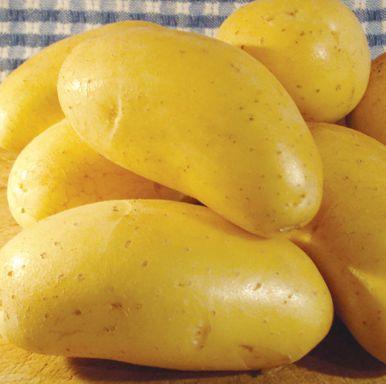
years in research, testing, and specialized consumer packaging to bring the variety to Canada.
“This variety proved so excellent in meeting all of the above criteria that we signed an exclusivity agreement with HZPC to grow and distribute this potato variety for Canada,” said John Griffin, president of W.P. Griffin Inc.
According to one Prince Edward Island potato grower, packer and shipper, the Annabelle potato meets all of those criteria. Developed in Europe by HZPC, the Annabelle potato variety has become a favourite among European chefs. W.P.
4,625x5 ann Fruit_Veget:Layout 1 11/16/09 12:51 PM Page 1
Griffin Inc. of P.E.I. has been growing potatoes for 60 years and sought to introduce Canada to the best potato variety possible. Working with HZPC Americas, the company has invested more than six

Michel Gratton
Montreal Area, Quebec
Tel: 514-332-2275
Fax: 450-682-4959
Yvon Riendeau
Montreal Area, Quebec
Tel: 450-454-9997
Fax: 450-454-5015
Yves Thibault, agr.
Central and Eastern Quebec and Atlantic Provinces
Tel: 418-660-1498
Fax: 418-666-8947
Warren Peacock Ontario
Tel: 519-426-1131
Fax: 519-426-6156
2914, Cure-Labelle Blvd, Laval (Québec) Canada H7P 5R9
Tel: 514-332-2275 Toll free: 800-561-9693
Fax: 450-682-4959 Toll free: 800-567-4594
Visit us at www.norseco.com
To assist in distribution, W.P. Griffin Inc. has formed alliances with Grand Bend of Ontario, Kroeker Farms in Manitoba, and Thomas Fresh in Alberta. The company has also developed Canada’s first microwavable steamer potato tray –Annabelle Potato SteamersTM – in order to deliver the best variety and most convenient product.
A website promoting the variety was launched in November 2010 at www. annabellepotatoes.ca. ❦

January 22, 2011 – Saskatchewan Fruit Growers’ Association 22nd Annual Conference, Saskatoon Inn, Saskatoon, Sask.
Visit www.saskfruit.com.
January 24-25, 2011 – Scotia Horticultural Conference 2011, Old Orchard Inn, Wolfville, N.S. Visit www.hortns.com.
January 25-26, 2011 – 2011 Ontario Processing Vegetable Industry Conference, London Convention Centre, London, Ont.
Visit www.opvg.org.
January 25-27, 2011 – 2011 Nova Scotia Fruit Growers’ Association Annual Convention, Old Orchard Inn, Wolfville, N.S.
Visit www.nsapples.com.
January 26-27, 2011 – Manitoba Potato Production Days, Keystone Centre, Brandon, Man. Visit www.mbpotatodays.ca.
January 27-29, 2011 – B.C. Agriculture Show 2011, Tradex Trade & Exhibition Centre, Abbotsford, B.C. Visit www.agricultureshow.net.
January 27-30, 2011 – 30th Annual Guelph Organic Conference, Guelph University Centre, Guelph, Ont. Visit www.guelphorganicconf.ca.
January 27-28, 2011 – B.C. Fruit Growers Annual General Meeting, Penticton Lakeside Resort Convention Centre & Casino, Penticton, B.C. Visit www.bcfga.com.
February 4-10, 2011 – 2011 North American Direct Farm Marketing Association Convention, Hyatt Regency Baltimore, Baltimore, Md. Visit www.nafdma.com.
February 8-11, 2011 – 2011 North American Strawberry Growers Association Annual Meeting, Doubletree Hotel, Tampa Westshore, Tampa, Fla. Visit www.nasga.org.

By Dan Woolley
Kelly Penner had big dreams when he cam to Nova Scotia’s Annapolis Valley in the late 1990s.
Born and raised on a poultry and wheat farm near New Norway, about 65 miles south of Edmonton in central Alberta, Penner liked what he saw in the Annapolis Valley. And he thought the apple industry appeared to be the most viable commodity sector in Nova Scotia.
“Basically, I would say I had a passion for agriculture,” said Penner. “I was in construction and I wasn’t totally satisfied with it because of my agricultural background.
“Partly, I wanted to try something different and partly, it had to do with our little church group here,” he recalled.
Penner is a follower of the Mennonite faith and is part of a growing Mennonite congregation in the valley.
In 2000, Penner purchased 110 acres near Aylesford, N.S., which included an old orchard planting of Spies, Cortland and Idared, dating back to the 1960s. He named
his farm Nazinga, in remembrance of a game park the Penner family visited while performing relief work in West Africa.
“I bought the land on which the existing orchard sat,” he said. “Its trees were doing poorly so I replaced them, not realizing how marginal the land was.”
According to Scotian Gold Cooperative vice president of operations Larry Lutz, who recently stopped at Penner’s farm as part of the 2010 Nova Scotia Fruit Growers Association’s orchard tour, the site consists of very heavy wet clay soil and required Penner to spend “a tremendous amount of time improving it – fumigating, draining and ripping the soil, ridging the rows.”
The first year in the orchard, Penner installed tile drain and ripped the soil. However, he discovered that was not enough. He then decided to land form the terrain, ridging and sloping the orchard rows so the surface water would drain down the tree rows.
That was his biggest challenge. It was also his biggest surprise because of the
amount of effort required to shape the land so surface water would drain from the orchard. Despite the costs in time and labour establishing and improving his operation, Penner believes it was well worth the effort.
“Oh yes, I would do it again.”
According to Lutz, Nazinga Farms offers an interesting case study of how a very marginal orchard plot can be renovated to a new peak of productivity.
Penner has converted the orchard extensively, planting Gala and Ginger Gold plus a significant number of trees under the Honeycrisp Orchard Renewal Program (HCORP). He is currently achieving good productivity from his Honeycrisp blocks, which are planted on M26 and CG30 rootstocks. His newest block is Sweet Tango, which he planted in 2009.
Penner looks forward to continuing orchard renovations on his operation, which he runs with the help of his wife and five children. ❦

Help may be on the way for millions of people bugged out about the invasion of stink bugs.
Scientists have reported a key advance in efforts to develop the first commercial repellent for stinkbugs, which are emerging as a major nuisance and a devastating pest to some farm crops. They identified a natural substance in a fungus that infects a common weed and found that it shows potential as the first stinkbug repellent.
Their study appeared in ACS’ Journal of Agricultural and Food Chemistry.

Hiromitsu Nakajima and colleagues note that stinkbugs are no strangers to Japan. In contrast, the brown marmorated stinkbug seems to have got a foothold in the U.S. around 1998, and since then has spread, especially in the mid-Atlantic states, invading homes and damaging fruit and vegetable crops. The nuisance bugs get their name from the skunk-like odour they emit when crushed or annoyed. Farmers are trying to control the pests using a variety of commercial insecticides, which kill the bugs. A stinkbug repellent could be just as effective in keeping the bugs at bay, but no reports on development
of such materials have appeared in scientific journals, they say.
The scientists isolated a fungus from the green foxtail plant, a common weed found in the U.S. and other countries. The fungus lives inside the plant and appears to help protect the foxtail from insect pests and disease. In laboratory tests, extracts of the fungus strongly repelled the white-spotted stinkbug, which they used as a test subject because it is easy to collect, maintain and handle under laboratory conditions. The scientists identified an ingredient in the extract that is capable of repelling up to 90 per cent of stinkbugs and suggest that this chemical could be part of the first repellent for controlling stinkbugs. The substance repelled the stinkbugs as effectively as naphthalene, an ingredient in mothballs and a gold standard for measuring the effects of insect repellents. A chemically modified version of the substance was almost twice as effective as napthalene. ❦
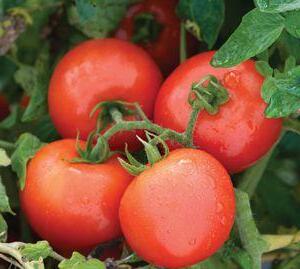


Today, being sustainable doesn’t mean you can’t look stylish! That’s the message from Earthcycle Packaging Ltd., which recently unveiled its new line of backyard compostable trays available in two colours.
This new tray line was designed for the agriculture industry, with optimal protection and merchandising in mind. The trays not only come in the traditional “natural earth” colour but also in black. They can be used to display tomatoes, stone fruit, and apples, as well as any commodity that needs a higher level of protection in shipping between packing and the store.
Earthcycle’s products are 100 per cent compostable and recyclable, taking just 90
days to compost. They are made and molded to hold almost any fresh product, with built-in cup options or the “flat bed” version.
Earthcycle Packaging was founded in 2005 and produces packaging alternatives made from renewable palm fibre.
www.earthcycle.com
Royal MH® is now available in a new product, marking the first time growers have access to the product.
Royal MH-30 Xtra, marketed by Chemtura AgroSolutions, is a plant growth regulator that provides harvest and storage quality benefits for potatoes and onions.
“We’re confident that growers will appreciate the convenience and versatility of Royal MH-30 Xtra,” said Kevin Brost, Canadian business manager with Chemtura AgroSolutions. “This new product is easy to use and has a wide range of tank-mix options. Royal MH-30 Xtra is proven to reduce shrinkage and improve grade quality in potatoes, as well as preventing sprouting in storage.”


Resist./Tol.: Fol1,2,3(HR), Ss(HR), V(HR). Extra large and large fruit with exceptional quality. Well adapted to Northern USA and Canada. Best in trial in 2008.

Resist./Tol.: Fom0,1,2(HR), Gc1(IR), Sulfur(IR). Improved Athena type with larger fruit size, and better netting. Maturity is 2-3 days earlier than Athena.

Both United Agri Products (UAP) and Engage Agro will be handling marketing for the product in Canada.
Royal MH-30 Xtra is available in a liquid formulation and is packed in 2 x 10 litre jugs. Royal MH-30 Xtra is reported to decrease potato shrinkage by up to 15 per cent, and improve grade by reducing the roughness of potatoes. With timely application, the number of undersized potatoes at harvest can also be substantially reduced, states the company.
Potatoes properly treated with Royal MH30 Xtra can reportedly be held between 7 and 10 C without sprouting, saving growers the cost of low-temperature storage and reconditioning. One application will protect potatoes from sprouting in storage by prolonging the naturally occurring dormant state and stopping internal sprouting in the tuber of the potato or onion. According to the company, additional treatments after storage are not necessary.
www.uap.com
www.engageagro.com
www.ChemturaAgroSolutions.com






Soil is no longer necessary for growing potatoes, at least for growing seed potatoes.
Newco, a potato technology transference company in Spain, is undertaking a research project, together with NeikerTecnalia from the Basque Institute for Agricultural Research and Development, for producing tubers in air by means of a novel system known as aeroponics.
Never before in Spain has the first generation of seed potatoes been produced on a large scale by means of aeroponic growth. The system increases productivity, as more than 20 tubers per plant can be obtained instead of the three or four achieved using conventional methods. It also reduces the rate of soil-based diseases and is a more sustainable system, requiring lower inputs of water and fertilizers. Aeroponics makes it possible to provide precisely the correct amount of both items needed by the plant at each phase of its development.
The aeroponic system of cultivation for the production of first-generation seed potatoes is carried out in greenhouses and consists of maintaining the plant roots in the air and in conditions of total darkness. In order for the plant and the tubers to develop, nutrients are applied to the roots by means of a nebulizer system, where nutrient-enriched water is sprayed on them periodically. Roots grow in the air, and this enables a great exposure to air and avoids the contact of the tubers with soil pathogens.
One positive aspect of the system is that the progress of the tubers can be continually controlled, enabling their harvesting at the moment of optimum growth. In the case of first-generation seed potatoes, the most appropriate size is considered to be between 20 and 25 millimetres in diameter. In this way, a homogeneous production can be achieved – something that is not possible with traditional cultivation given that all the tubers are harvested at the same time and they do not show the same development or size.
The conventional production method for first-generation seed potatoes is based

ABOVE: The aeroponic system of cultivation for the production of firstgeneration seed potatoes is carried out in greenhouses and consists of maintaining the plant roots in the air and in conditions of total darkness.
RIGHT: The potato plants are cultivated to obtain the tuber-seeds, or minitubers, which show a high health quality level.
on high-density plantations in peat substrate and in greenhouses. This kind of production is highly labour intensive, with high costs due to the low numbers of tubers produced per plant (three or four tuber-seeds).
The production of seed potatoes follows a specific route map, starting with the in vitro multiplication of plants free of disease. These plants are then cultivated to obtain the tuber-seeds, or minitubers, which show a high health quality level and are the first-generation seeds (prebasic). These minitubers are the starting material for obtaining basic seed in its categories SuperElite and Elite. From this basic seed, Certificate A seed can be obtained, commonly employed to produce potatoes for consumption.
The Newco/Neiker-Tecnalia research

project is aimed at developing the production of seed potatoes, something that is not being performed or achieved in Spain except in a very small quantity. The production of minitubers requires high technological skills and is currently practically non-existent in Spain. This means Spanish seed potato producers have to import them from countries like France, Holland and Scotland. ❦



Primo Red Tomato 65

Vanguard Pepper
75


